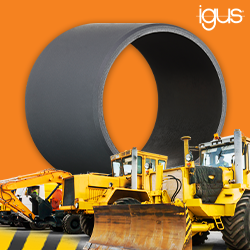Internet of Things in Agriculture: Cultivating a Smarter Future
This 1,000-word article explores the transformative impact of IoT in agriculture, highlighting its role in driving efficiency, sustainability, and resilience. It covers the market's growth from USD 16.22 billion in 2025 to a projected USD 54.38 billion by 2030, key applications like precision irrigation and crop monitoring, benefits such as higher yields and resource savings, and challenges including high costs and connectivity gaps. The piece also showcases leading innovators and envisions a future of connected, eco-friendly farming powered by AI and 5G.
IoT Meets Agriculture
Farming faces fierce challenges: unpredictable climates, labour shortages, and a surging global food demand for 10 billion people by 2050. IoT weaves sensors, connectivity, and analytics into agriculture, delivering real-time insights to tackle these issues. In 2025, the global IoT in agriculture market is valued at USD 16.22 billion, projected to reach USD 54.38 billion by 2030 with a 10.5% CAGR. By optimising resources, cutting water waste by 30% and boosting yields by 15-20% IoT is vital for resilient, eco-friendly farming across diverse regions.
How IoT Drives Smart Farming
IoT infuses agriculture with intelligence and efficiency, revolutionising operations from planting to harvest. Sensor networks monitor soil, weather, and livestock, feeding AI systems that predict and prevent issues like droughts or diseases. In 2025, IoT's integration with 5G and edge computing enables split-second decisions, such as adjusting irrigation based on live weather data. With 60% of large farms adopting IoT for precision tasks, it's paving the way for a sector that feeds the world while preserving its resources.
Key Applications of IoT in Agriculture
IoT's versatility blooms across farming's core functions, delivering tailored solutions:
Precision Irrigation: Sensors track soil moisture and weather, automating drip systems to save 30% of water in arid regions.
Crop Monitoring: Drones and sensors spot pests or nutrient deficiencies early, using imaging for 95% accurate yield predictions.
Livestock Management: Wearables monitor animal health and feeding, alerting farmers to issues and optimising herd output.
Supply Chain Tracking: IoT tags ensure traceability from farm to table, cutting spoilage by 20% with real-time controls.
The Benefits: Yield, Efficiency, Sustainability
IoT delivers a harvest of advantages, strengthening farms against uncertainty:
Higher Yields: Data-driven insights boost crop output by 15-20%, maximising harvests with minimal extra inputs.
Resource Savings: Smart systems reduce water, fertiliser, and energy use by 25-30%, easing costs and environmental impact.
Labour Relief: Automation handles repetitive tasks, freeing farmers for strategic planning amid rural workforce shortages.
Resilient Decisions: Real-time analytics predict risks like frost or pests, minimising losses and enhancing food security.
Challenges in Adoption
IoT's potential is abundant, but obstacles slow its growth:
High Costs: Sensors and systems cost $10,000-$50,000 per farm, deterring smallholders despite strong long-term returns.
Connectivity Gaps: Rural areas lack broadband, with 40% of global farms offline, limiting cloud-based IoT functionality.
Data Security Risks: Cyber threats expose farm data, requiring robust encryption to build trust among users.
Skill Shortages: Farmers need training for IoT tools, but digital literacy lags in 70% of developing regions.
Innovators and Startups Leading the Harvest
The IoT agriculture market is alive with pioneers, from giants to nimble startups:
CropX: Soil sensors and AI optimise irrigation, serving 1 million acres and cutting water use by 25%.
Farmers Edge: Platforms blend satellite and IoT data for variable-rate farming, empowering 20 million acres.
Sencrop: Affordable weather stations connect 10,000+ farmers, delivering forecasts to boost yields by 10%.
Stellapps: Dairy IoT tracks milk quality and cow health, transforming supply chains for 2 million farmers.
The Future: Connected Fields, Abundant Harvests
By 2030, the IoT agriculture market could reach USD 78.8 billion with a 13.2% CAGR, driven by AI-blockchain hybrids and satellite connectivity. Swarm robotics for automated planting and carbon-tracking sensors will lead trends, with Asia-Pacific growing at 12% amid urbanisation. Affordable 5G and subsidies will empower small farms, fostering regenerative practices that sequester carbon while feeding billions. IoT will not only grow crops but also nurture ecosystems, ensuring agriculture thrives sustainably.
Conclusion
The Internet of Things in agriculture is a lifeline for sustainable abundance. From precise irrigation to vigilant crop monitoring, IoT equips farmers to conquer scarcity and climate challenges. Addressing costs and connectivity will unlock its global potential. For growers and innovators, embracing IoT is the seed of tomorrow's resilient, thriving food systems.
Featured Product

iglide® Q3E - two-component, high-load bearings for heavy-duty use
In this iglide® multi-component bearing, the outstanding tribological properties of iglide® Q3 are embedded in a high-strength jacket. The result is an even higher mechanical load capacity with simultaneously low wear, perfect for heavy-duty applications in harsh environments.
